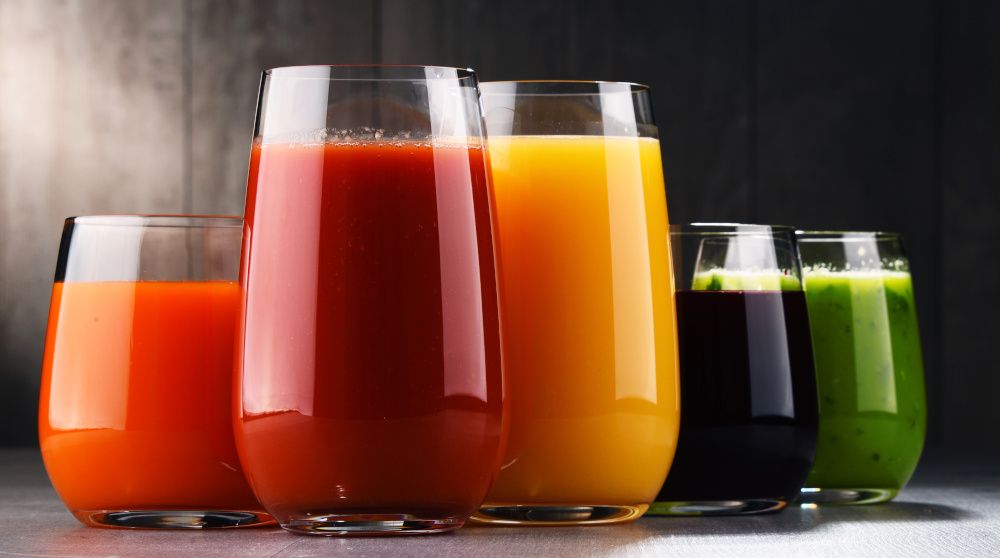Juice is now an indulgent treat rather than just a breakfast-time staple: Natural Products Expo West report
At Expo West, FruitSmart, a supplier of fruit- and vegetable-based juices and ingredients, explained how consumer perceptions of juice are changing.
Not so long ago, when you said “juice,” people pictured either an orange juice you’d drink at breakfast or maybe an apple juice you’d give to kids. How times have changed. Today, juice can be a sophisticated, indulgent treat. At the March’s Natural Products Expo West trade show in Anaheim, CA, FruitSmart Inc. (Prosser, WA), a supplier and processor of fruit- and vegetable-based juices and ingredients, discussed why, with the addition of functional ingredients, nuanced and interesting flavors, and even smaller packaging sizes, the juice market can capture a new subset of customers.
“The real trend of juice has always been focused on breakfast time—100% orange juice, apple juice, cranberry juice,” said Wayne Lutomski, the company’s president, at Expo West. But, like it did toward so many things, the COVID-19 pandemic changed consumers’ feelings.
“As part of COVID,” Lutomski said, “people were looking for new flavor experiences, and they want 100% juices that have unique blends to help deliver that. It’s an indulgent treat for them. So you get a little bit of the health benefits from the fruit and the juices, but you get a neat flavor experience, too.”
Their preferences will also depend on when they’re drinking juice. For instance, Lutomski said, “if they’re drinking something in the evening, they want a flavor experience that goes beyond an apple or an orange.” They’re looking for flavors more sophisticated, unusual, and adventurous, he said.
At the show, Lutomski shared some of FruitSmart's juice concepts catering to this new kind of consumer. One was a juice combining apple, beetroot, and red and black pepper. Lutomski said FruitSmart has partnerships in place with vegetable suppliers (like the one who supplied the red and black pepper) and botanical suppliers to source these added ingredients.
Companies not only have the option of enticing consumers with unexpected flavors and spices to create exciting new juice flavors, they can also promote ingredients that add functional health benefits. For instance, at the show, FruitSmart distributed prototypes of an “immunity blend” juice combining seven different types of juices and herbs: raspberry, blueberry, elderberry, apple, acai, vanilla, ginger, and turmeric. Yet another sample was a smoothie-like juice containing raspberry juice, protein, and fiber. The fiber is upcycled from fruits and added back into the juice to boost protein content. (FruitSmart has expertise in a broad range of applications, including juices, purees, concentrates, essences, fibers, seeds, seed oils, and seed powders.)
Botanicals with relaxation or energizing effects are trending, as are herbal ingredients like lavender, hibiscus, and echinacea, Lutomski said. These lend not only unique flavor but health appeal.
To blend all these ingredients into a pleasant-tasting mix requires expertise, he said. Take the immunity-blend prototype. “There are seven different juices in that one. How do you find the right balance for that?" he said. "You need somebody who knows what they’re doing to get that right balance and deliver that for the consumer. Fortunately, that’s something we have and can do.”
Another trend he sees coming down the line for juices is smaller packaging. Lutomski thinks that as consumers become increasingly interested in consuming juice as a treat, they’ll want it in smaller serving sizes, “so you want to have really creative packaging in a small pack.”
As a final tip, Lutomski advised that apple juice can be a carrier for flavoring, one that doesn’t overpower other flavors and that can actually help blend flavors out and give the overall product a better mouthfeel. “Apple juice really is a fundamental base for a lot of these flavors that you can do. And it also helps because it’s relatively inexpensive right now compared to, say, orange. Apple is typically your least-expensive fruit juice that you can find. And that helps. And because it’s such a great carrier for other flavors, you can do a cost-effective product in the marketplace. And that’s really important right now because everyone is fighting inflation, and retailers are pushing suppliers to bring the price down. Apple works really well in that scenario.”
Prinova acquires Aplinova to further increase its footprint in Latin America
April 7th 2025Prinova has recently announced the acquisition of Brazilian ingredients distributor Aplinova, which is a provider of specialty ingredients for a range of market segments that include food, beverage, supplements, and personal care.











